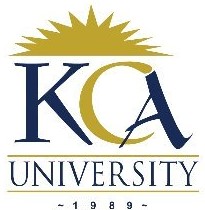 UNIVERSITY EXAMINATIONS: 2016/2017
UNIVERSITY EXAMINATIONS: 2016/2017
EXAMINATION FOR THE DEGREE OF BACHELOR OF SCIENCE
INFORMATION AND COMMUNICATIONS TECHNOLOGY
BCT 3202 ADVANCED NETWORK MANAGEMENT
FULL TIME/PART TIME
DATE: AUGUST, 2017 TIME: 2 HOURS
INSTRUCTIONS: Answer Question One & ANY OTHER TWO questions.
QUESTION ONE [30 MARKS]
a) Describe the functions of the following software troubleshooting tools:
(i) Protocol Analyzers 4 Marks
(ii) Network Management Station (NMS) 4 Marks
b) The KCAU corporate LAN consists of one large flat network. You decide to segment this
LAN into two separate networks with a router.
(i) What will be the affect of this change? 2 Marks
(ii) If a host on a network has the address 192.168.10.40/28, what is the address of the
subnetwork to which this host belongs? 2 Marks
(iii) How many hosts per subnet have been created by the addressing scheme above?
2 Marks
c) Discuss the steps involved in building a network baseline 6 Marks
d) Discuss the guidelines for choosing the right troubleshooting methodology.
4 Marks
f) When planning the installation of LAN cabling, there are physical areas to consider.
Discuss each of the following areas:
(i) Work Areas 3 Marks
(ii) Telecommunications Room 3 Mark
QUESTION TWO [20 MARKS]
a) (i) Two buildings on the Ruaraka campus of KCA University must be connected to
use Ethernet with a bandwidth of at least 100 Mbps. Our main concern is about possible
problems from voltage potential differences between the two buildings. Explain which
media type should be used for the connection 2 Marks
(ii) You are installing IP phones in a new office. The phones and office computers
connect to the same device. To ensure maximum throughout for the phone data sessions,
the company needs to make sure that the phone traffic is on a different network from that
of the office computer data traffic. What is the best network device to which to directly
connect the phones and computers and what technology should be implemented on this
device? 2 Marks
b) Discuss the benefits and drawbacks of using Network Address Translation (NAT).
6 Marks
c) Describe the functions of the following hardware troubleshooting tools:
(i) Cable analyzers 2 Marks
(ii) Portable Network Analyzers 2 Marks
d) Networks must support a wide range of applications and services, as well as operate over
many different types of physical infrastructures. In this regard discuss the following concepts:
(i) Fault Tolerance 3 Marks
(ii) Scalability 3 Marks
QUESTION THREE [20 MARKS]
a) State four major benefits of VLANs. 4 Marks
b) Explain the following :
(i) Storage Area Networks (SAN). 2 Marks
(ii) Virtual Private Network (VPN). 2 Marks
c) Discuss briefly Network Management under the following headings:
(i) Network Documentation 4 Marks
(ii) Network Security 5 Marks
d) What factors would you take into account when choosing between a layer 3 switch and a
router? 3 Marks
QUESTION FOUR [20 MARKS]
a) Describe any four major benefits associated with hierarchical network designs.
8 Marks
b) Explain briefly four benefits of Virtual Private Networks (VPNs). 4 Marks
c) What five issues were considered during the development of IPv6? 5 Marks
d) State the three major characteristics of WANs. 3 Marks
QUESTION FIVE [20 MARKS]
a) With the aid of a clearly labelled diagram, explain how the structured cabling is
implemented between the work areas and the equipment rooms (wiring closets).
6 Marks
b) Explain the following switch operations:
(i) Learning 2 Marks
(ii) Flooding 2 Marks
(iii) Selective forwarding 2 Marks
(iv) Filtering 2 Marks
c) Explain the steps to be followed in connecting to a router or switch for device
management using terminal emulation 6 Marks